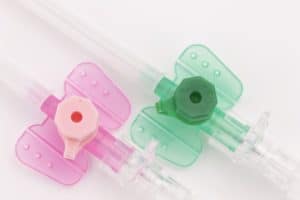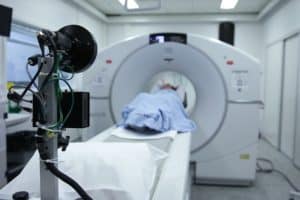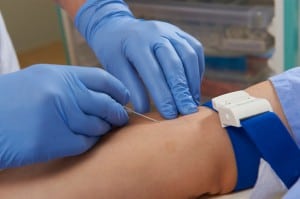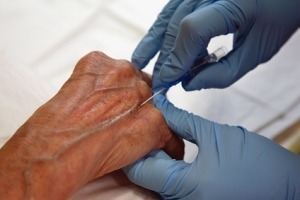National evaluation of safety peripheral intravenous catheters

This article presents an excerpt of a national evaluation undertaken by an independent team of NHS senior clinicians from different fields, commissioned by the Department of Health and Social Care into everyday healthcare consumables” Guerrero (2019). Abstract: Studies have demonstrated that up to 90% of all inpatients require the insertion of some form of an […]
Novel short peripheral catheter design for prevention of thrombophlebitis

Here we introduce a novel SPC, named Very Short Peripheral Catheter(VSPC), that was designed to minimize biomechanical irritation and improve blood flow” Weiss et al (2018). Abstract: BACKGROUND: Short peripheral catheters (SPCs) are the most common intravenous device in today’s medical practice. Short peripheral catheter thrombophlebitis (SPCT) occurs in up to 80% of hospitalized patients. […]
How to use topical anesthetics and distraction for peripheral IV catheter placement

The purpose of this article is to educate nursing staff of the importance of using topical analgesics such as LMX4 and EMLA, needle free lidocaine injections, as well as different methods of distraction to successfully place a peripheral intravenous catheter in a pediatric patient on first attempt” Martin (2018). Abstract: Placing a peripheral intravenous catheter […]
Laterality of peripheral IV catheter and associated outcomes

Based on this, we conclude that laterality should not influence the decision regarding where to insert a PIVC at the upper extremity” Sommerstein et al 92018). Extract: “Our aim was to correlate the laterality of PIVCs placed in the upper extremity with the outcome rates of complications and patient satisfaction. We included 291 of 302 […]
What is the cost of unsuccessful short peripheral catheter placement?

Peripheral intravenous therapy is an established therapy with known complications and failures. The burden of the cost of unsuccessful short peripheral catheter (SPC) placement and maintenance is not always clearly identified” Jones (2018). Abstract: Peripheral intravenous therapy is an established therapy with known complications and failures. The burden of the cost of unsuccessful short peripheral […]
An example of how to improve peripheral vascular access outcomes

This study examined PIVC practice-related metrics before and after a comprehensive process improvement program, which included a change to closed catheter technology” Platt and Osenkarski (2018). Abstract: With most hospitalized patients requiring peripheral intravenous catheters (PIVCs), PIVC-related process improvement may substantially affect the health, safety, and satisfaction of patients and health care workers, in addition […]
Comparison of standard short peripheral catheters versus a power injectable version

…compared the use and outcomes of standard SPCs (nonfenestrated) versus a power injectable SPC (fenestrated with 3 side holes distal to the catheter tip)” Pohlod (2018). Abstract: To perform high-resolution computed tomography and magnetic resonance imaging angiographies, contrast typically is rapidly injected through a 20-gauge or larger short peripheral catheter (SPC). Intravenous access in infants […]
Epidemiology and microbiology of peripheral line–associated bloodstream infection (PLABSI)

We retrospectively studied the epidemiology and microbiology of peripheral line–associated bloodstream infection (PLABSI) in comparison with central line–associated bloodstream infection (CLABSI)” Tsuboi et al (2018). Abstract: We retrospectively studied the epidemiology and microbiology of peripheral line–associated bloodstream infection (PLABSI) in comparison with central line–associated bloodstream infection (CLABSI). Among 2,208 bacteremia episodes, 106 (4.8%) PLABSI and […]
Nursing competence in ultrasound-guided peripheral intravenous catheter placement

Ultrasound-guided peripheral intravenous catheter placement has many potential benefits and is a viable skill for nurses to learn. The objective of this study was to demonstrate the feasibility and validity of hand motion analysis for assessment of nursing competence in ultrasound-guided peripheral intravenous placement” Good et al (2018). Abstract: INTRODUCTION: Objective measures such as hand […]
Ultrasound guided peripheral intravenous access reviewed

The success of ultrasound-guided peripheral intravenous catheters (USGIVs) has been associated with significant reductions in central venous catheter placement in the emergency department[3] as well as enhanced patient satisfaction” Presley and Isenberg (2018). Excerpt: At least 150 to 200 million peripheral intravenous (PIV) catheters are placed each year in the United States, while up to […]
How to improve IV cannulation success in tortuous and valve-rich peripheral veins

Peripheral veins often contain tortuosities and valves that hinder the effective passage of intravenous catheters to the full extent of catheter length. This report describes a methodology termed flick-spin that has proven efficacious for venous catheter passage in tortuous and valve-rich peripheral veins” Lanier (2018). Abstract: Peripheral veins often contain tortuosities and valves that hinder […]
Building a team for difficult-vascular access in the emergency department

The implementation of a dedicated difficult venous access team can generate a significant decline in the time needed to obtain IV access for critical diagnostics and medical interventions” Whalen et al (2018). Abstract: Problem: Difficult venous access is a common problem in health care—especially in the emergency setting—that relies on quick diagnostics to differentiate patient […]
Easy IJ an alternative IV for patients with difficult vascular access

The peripheral internal jugular (IJ), also called the “easy IJ,” is an alternative to peripheral venous access reserved for patients with difficult intravenous (IV) access” Zitek et al (2018). Abstract: INTRODUCTION: The peripheral internal jugular (IJ), also called the “easy IJ,” is an alternative to peripheral venous access reserved for patients with difficult intravenous (IV) […]
Peripheral intravenous catheter insertion difficulty and registered nurse performance

To describe the characteristics, problems, and interventions associated with performing peripheral intravenous catheterisation (PIVC) in difficult situations when registered nurses (RNs) need support from critical care nurses (CCNs)” Engström and Forsberg (2018). Abstract: OBJECTIVES: To describe the characteristics, problems, and interventions associated with performing peripheral intravenous catheterisation (PIVC) in difficult situations when registered nurses (RNs) […]
Elective replacement of intravenous cannula in neonates-a randomised trial

The reported incidence of extravasation injury is as high as 70% in the neonatal and paediatric population and has an association with cannula dwell time” Chin et al (2018). Abstract: Peripheral intravenous cannula (PIVC) insertion is one of the most common invasive procedures performed in neonates and is frequently associated with adverse events. There are […]
Human factors intervention reduces the rate of unused peripheral IV cannula insertion

Our objective was to examine the impact of a human factor-designed multimodal intervention on the proportion of unused peripheral i.v. cannula (PIVC) insertion in our ED” Egerton-Warburton et al (2018). Abstract: OBJECTIVE: Our objective was to examine the impact of a human factor-designed multimodal intervention on the proportion of unused peripheral i.v. cannula (PIVC) insertion […]
Peripheral intravenous cannula fracture case report

We present a case of broken peripheral intravenous catheter/cannula (PIVC), a well-known, underreported complication of PIVC placement. The fractured cannula could have resulted in intravascular foreign body retention, which is usually iatrogenic” Khoo et al (2018). Abstract: INTRODUCTION: We present a case of broken peripheral intravenous catheter/cannula (PIVC), a well-known, underreported complication of PIVC placement. […]
Management of peripheral intravenous catheters with new guidelines

This quality improvement project aims to proactively remove PIVCs as soon as possible by empowering nurses and providers to clinically evaluate the necessity of every PIVC on a daily basis on a general hospital medical unit” Loudermilk et al (2018). Abstract: Peripheral intravenous catheters (PIVCs) are common devices used across many healthcare settings. This quality […]
Certified Child Life Specialist intervention on pediatric pain during peripheral IV line placement

<h2 class=”modern-quote pull alignleft”>This study evaluated the effects of Certified Child Life Specialist (CCLS) intervention on pediatric distress and pain and family satisfaction during routine peripheral intravenous (PIV) line placement in the emergency department (ED)” Sanchez Cristal et al (2018).</h2> Abstract: This study evaluated the effects of Certified Child Life Specialist (CCLS) intervention on pediatric […]
Peripheral IV education reduces potential complications and improves patient outcomes

The study highlights the varying level of peripheral intravenous education and competency evaluation of staff working in health care institutions. The results suggest the need for an evidence-based, standardized peripheral intravenous curriculum that could be used in both health care institutions and nursing education programs” Hunter et al (2018). Abstract: Background: Greater than 90% of […]
Complication rates of ultrasound guided versus traditional peripheral intravenous catheters

This study analyzed 300 ultrasound-guided peripheral intravenous lines and 552 traditionally placed intravenous lines using patient records to determine the reason and timing for intravenous line removal” Desai et al (2018). Abstract: Background: Ultrasound-guided peripheral intravenous lines are frequently used in patients with difficult access. We have previously reported on the longevity and complication rates […]

